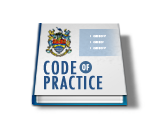 The Site Investigation Code of Practice establishes a standard of “acceptable engineering practice” to assist the construction industry (client, project manager, consultant, contractor) in the planning, design and execution of geotechnical site investigations in southern Africa.
The Site Investigation Code of Practice establishes a standard of “acceptable engineering practice” to assist the construction industry (client, project manager, consultant, contractor) in the planning, design and execution of geotechnical site investigations in southern Africa.
The code has been introduced to the South African civil engineering industry to address shortcomings that have lead to inappropriate investigations being carried out.
The code is published as a guide to good practice and is not intended to be prescriptive in its content and recommendations.
The recommendations contained herein are based on generally accepted national and international standards and principals, and any deviation from these recommendations should be defended by sound engineering judgement or site specific experience.
Site investigation is a complex scientific process that is vital to any construction project. Inadequate investigation can lead to over-conservatism in design and/or large construction cost overruns. Conversely it can lead to failures during or after construction resulting in damage to property, consequential damages or even loss of life.
There are countless examples in industry of investigations that were insufficient or inappropriate for the type and size of development, the prevailing soil conditions and proposed foundation solutions. Often these investigations have been prescribed by budget and/or time constraints (fast tracking), or by inexperience on the part of the client and project manager.
The objective of this code is to recommend a concise and systematic way of carrying out investigations using methods and techniques that are relevant, reliable and cost-effective. In addition to giving guidance to geotechnical practitioners, this guideline should also be used by project managers and clients in the preparation and adjudication of site investigation proposals and tenders.
The document has not been drafted as a comprehensive guideline of investigative methods and should be read in conjunction with the references cited at the end of each section. A bibliography is included at the end of the document for further reading.
Download full article (code of conduct) (PDF)
Categorised in: Uncategorized
